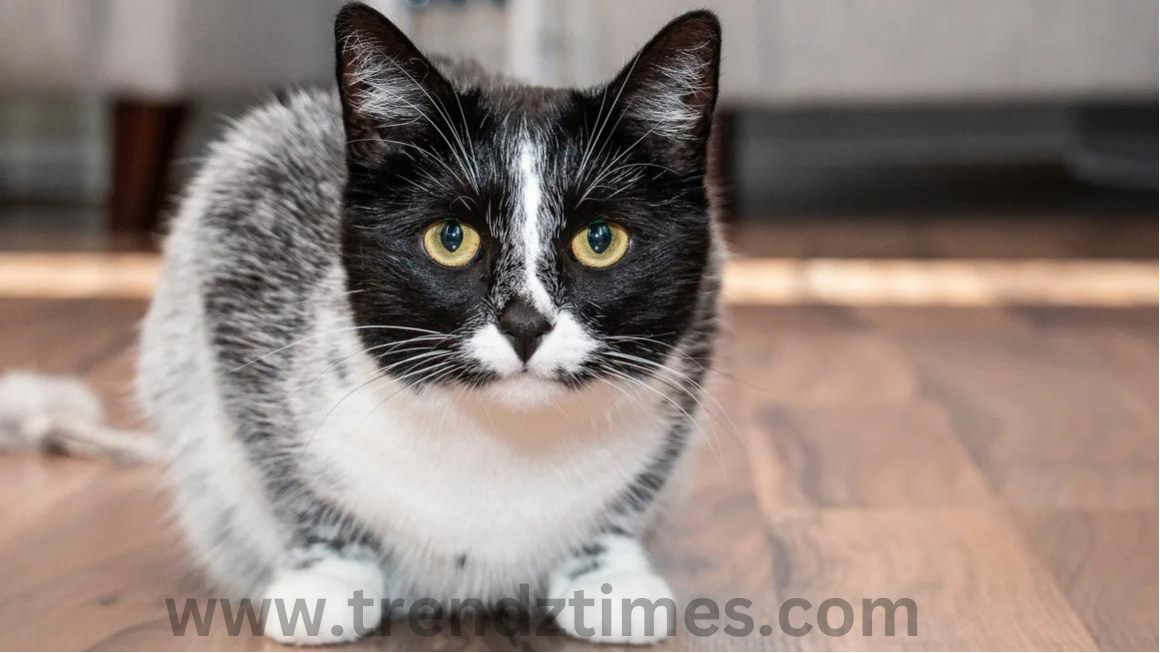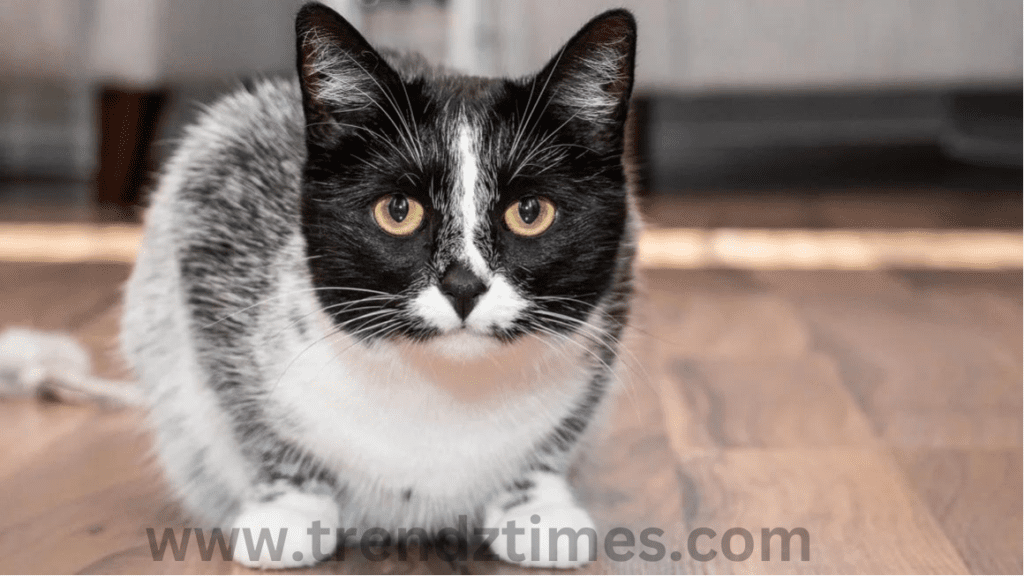Blog
‘Salty Licorice’ Cat Pattern Explained by Genetic Mutation Study

Discovering an Iconic Feline Fur Pattern in Finland
‘Salty Licorice’ Cat Pattern Explained by Genetic Mutation Study In Petäjävesi, Finland, a unique cat fur pattern caught the eye of geneticist Hannes Lohi and his team. This pattern, resembling the Finnish treat “Salmiak” or Salty licorice, appeared in local cats back in 2007. The cats showcased unusual white coloring around their chests, giving them an Ombré effect from dark roots to white tips, much like tuxedo cats. Intrigued by this striking pattern, Lohi’s team embarked on a research mission to uncover its genetic cause.
The Role of the KIT Gene
The researchers began their investigation by collecting blood samples from these uniquely patterned cats. They sequenced the full genome of these cats and identified an unknown mutation on a particular gene called KIT. This gene variant, dubbed w-Salmiak, was linked to the distinctive salty licorice pattern. The team discovered that cats carrying two copies of this recessive gene exhibited the unique color pattern.
Collaboration and Research Approach
Lohi’s study was notably collaborative, involving the University of Helsinki and a Biobank that provided 5,000 blood samples from 40 feline breeds. The pet care company Wisdom Panel also played a significant role in conducting genetic tests. This collaborative effort aimed to identify gene variations responsible for the white coloration observed in these cats. Through community science, cat owners and breeders contributed valuable data, enhancing the Research’s depth and Accuracy.
Findings and Expert Insights
The study’s findings revealed that the w-Salmiak gene variant regulated the production of proteins linked to hair color. Greg Barsh noted the importance of the KIT gene in controlling hair color and other cellular functions, such as red blood cells, sperm, and eggs. The presence of gene variants in both cats and dogs sometimes results in white fur and deafness.
Broader Implications and Ongoing Projects
Lohi emphasized the study’s broader goal of understanding the molecular and environmental causes of feline disorders. The ongoing projects at the University of Helsinki, in collaboration with Wisdom Panel, aim to explore the genetics of different diseases in cats and humans. By studying the genes responsible for various medical conditions, researchers hope to gain insights applicable across mammal species.
Practical Implications for Breeders and Cat Owners
‘Salty Licorice’ Cat Pattern Explained by Genetic Mutation Study The discovery of the w-Salmiak gene variant provides breeders and cat owners with valuable information. With tailored genetic testing, they can monitor their cats’ health and address potential color-related health issues. This study highlights the importance of understanding genetic mutations to ensure the well-being of companion animals.
A Fascinating Look at Genetic Diversity

Annakarin thought the name salmiak fit well. The cats’ white fur reminded her of the candy’s speckled look. Locals loved the name and started calling them salty licorice cats too.
This study not only uncovers the genetic basis of an exceptional However, fur, design also deepens our understanding of genetics in companion animals. The identification of the KIT gene variant opens new avenues for research and highlights the intricate relationship between genetics and physical traits in cats.
By exploring these genetic aspects, we gain a deeper appreciation for the diversity and complexity of our furry friends. The study by Lohi and his team functions as a testament to the power of collaboration and innovative research in uncovering the mysteries of genetics.
Beauty and uniqueness found in every cat
It also reminds us of the beauty and uniqueness found in every cat, whether they have a salty licorice pattern or not. So, as cat lovers, we should cherish and celebrate this diversity while continuing to support scientific discoveries that enhance our understanding of these beloved creatures.The T gene variant, also known as the agouti signaling protein (ASIP) gene, plays a crucial role in the development of coat patterns and colors in cats. This gene determines whether a cat will have a solid color or various patterns such as tabby, tortoiseshell, or calico.
However, recent research has shown that this gene may have an even broader impact on other physical traits in cats. For example, certain variations of this gene have been linked to increased melanin production and a higher likelihood of having blue eyes in white cats.
This new information opens doors for further exploration into the intricate relationship between genetics and physical characteristics in our feline friends. It also raises questions about how different genetic variations can result in unique.
18th-century wood-log church
Growing up in Petäjävesi, a beautiful village in Finland known for its 18th-century wood-log church, I loved spending time on my family’s farmland. One summer, we noticed our cat had developed an unusual fur pattern. Despite her white chest, her fur had an ombré effect, dark at the root and fading to white. We were curious but never thought much of it until I read a fascinating study recently.
On May 9, researchers led by geneticist Hannes Lohi at the University of Helsinki published their findings in the journal Animal Genetics. They discovered that this exceptional cat fur pattern, similar to the Finnish treat salmiak (salty licorice), is due to a novel gene mutation.
Discovering the Genetic Cause
The team, including Lohi’s collaborators, embarked on a genetic research project aimed at uncovering the cause behind the unusual white coloration in these cats. By collecting 5,000 blood samples from 40 feline breeds, they built a comprehensive biobank. With the help of pet care companies, they conducted genetic tests on DNA samples from cat owners and breeders.
The researchers observed this unique fur pattern as early as 2007. They collected samples from cats showing white coloration, analyzing gene variations. Eventually, they sequenced the full genome of these cats and identified an unknown mutation in a particular gene called KIT. This gene variant, dubbed “w-sal” or “salmiak,” mirrors the black licorice covered in white salt and gives these cats their unique color.
The KIT Gene’s Role
The KIT gene plays a crucial role in regulating hair color. It produces proteins essential for the development of red blood cells, sperm, eggs, and other cells. Variants of this gene can lead to white fur and even deafness in both cats and dogs. In this case, the w-sal gene mutation causes the salty licorice-like fur pattern. The researchers found five salmiak cats with two copies of this recessive gene among 178 normal-colored samples in the biobank.
Importance of the Study
‘Salty Licorice’ Cat Pattern Explained by Genetic Mutation Study This sophisticated and significant study underscores the pivotal role of the KIT gene in regulating hair color. Greg Barsh, a professor of genetics at Stanford University, mentioned that understanding these gene variants provides valuable insights into genetic research and the broader implications for other mammals, including humans.
Potential Health Implications
While the primary focus of the study was on the unique fur pattern, the research also pointed out potential health implications related to the gene mutation. For cat owners and breeders, this discovery could lead to tailored genetic testing to identify and manage color-related health issues.
Broader Goals and Collaboration
This research is part of a larger goal of understanding molecular and environmental causes of feline disorders. Ongoing projects at the University of Helsinki, in collaboration with companies like Wisdom Panel, aim to develop pet DNA tests that can identify different diseases and genes across various mammal species. This work not only benefits cats but also has implications for humans and other animals.
Community Science and Future Research

People first saw salty licorice cats with unique white fur in Petäjävesi, Finland, over 15 years ago. Ari Kankainen.
One of the most interesting aspects of this research is the community science approach. Cat owners and breeders played a significant role in providing samples and data. Their collaboration with researchers led to these groundbreaking discoveries.
Lohi, the corresponding author, emphasized the importance of community science in generating research ideas and engaging pet owners. This trend of involving the community in scientific research opens new avenues for exploring genetic causes and improving pet care.
A Fascinating Journey
Reflecting on my childhood in Petäjävesi, it’s incredible to think that my cat’s unique fur pattern was the result of a genetic mutation. This study not only uncovers the fascinating science behind such patterns but also highlights the value of collaboration between researchers, cat owners, and breeders.
This content is for informational purposes only and does not constitute medical or veterinary advice.
Always consult with a qualified veterinarian for any health concerns related to your pet.
FAQ
1. What is the significance of the KIT gene in cats?
‘Salty Licorice’ Cat Pattern Explained by Genetic Mutation Study The KIT gene plays a crucial role in determining the coloration of cat fur, as well as regulating other cellular functions such as the development of red blood cells, sperm, and eggs. The discovery of the w-Ammonium chloride gene variant linked to the KIT gene helps explain unique patterns of fur like the salty licorice pattern.
2. How was the w-Salmiak gene variant identified?
The gene variant was identified through a collaborative research study initiated by geneticist Hannes Lohi and his team. Cats with the unique pattern and collaborating with various institutions, they pinpointed the novel mutation on the KIT gene.
3. What role did community science play in this study?
Community science involved contributions from cat owners and breeders who provided valuable data and samples. So That It will enhance the depth and accuracy of the genetic study, showcasing the importance of public involvement in scientific research.
4. How can cat breeders and owners use the findings of this study?
The identification of the w-salmiak gene variant allows breeders and owners to utilize tailored genetic testing. It monitor their cats’ health, potentially addressing color-related health issues and ensuring the well-being of their pets.
5. What are the broader goals of the ongoing projects at the University of Helsinki?
The broader goals include understanding the molecular and environmental causes of feline disorders. It explors the genetics of different diseases, and applying these insights across mammal species to improve health and treatment outcomes.
Blog
what is joint custody: Latest
Blog
Best Vacation Spots in the US:

A Guide for Citizens and Visitors
Best Vacation Spots in the US: The United States is a treasure trove of vacation destinations, offering an incredible variety of landscapes, cultures, and experiences. Whether you are a U.S. citizen exploring your own backyard or a traveler from abroad looking to immerse yourself in the American experience, there’s something for everyone. Here are some of the best vacation spots in the U.S. to consider for your next adventure.
1. New York City, New York
For a city that never sleeps, New York is a must-visit destination. Home to iconic landmarks like Times Square, the Statue of Liberty, and Central Park, the city offers a vibrant mix of culture, cuisine, and entertainment. Don’t miss the Broadway shows, world-class museums like the MET, and the bustling neighborhoods like SoHo and Williamsburg.
- Ideal For: Culture enthusiasts, foodies, and urban adventurers.
- Pro Tip: Visit during spring or fall to enjoy pleasant weather and fewer crowds.
2. Grand Canyon, Arizona
This natural wonder is awe-inspiring and a perfect destination for nature lovers. Hike along the South Rim, take a helicopter tour for breathtaking views, or raft down the Colorado River for an unforgettable adventure.
- Ideal For: Outdoor enthusiasts and families.
- Pro Tip: Sunrise and sunset offer the most stunning views.
3. Honolulu, Hawaii
Experience the tropical paradise of Hawaii’s capital city. From the famous Waikiki Beach to the historic Pearl Harbor sites, Honolulu is a blend of relaxation and cultural heritage.
- Ideal For: Beach lovers, surfers, and history buffs.
- Pro Tip: Explore nearby attractions like Diamond Head and Hanauma Bay for snorkeling.
4. Yellowstone National Park, Wyoming/Montana/Idaho
America’s first national park is a wonderland of geysers, hot springs, and diverse wildlife. Old Faithful and the Grand Prismatic Spring are must-sees, but the park also offers incredible hiking and camping opportunities.
- Ideal For: Nature lovers and adventure seekers.
- Pro Tip: Visit during late spring or early fall to avoid the summer crowds.
5. New Orleans, Louisiana
Known for its vibrant culture, jazz music, and Creole cuisine, New Orleans is a city like no other. The French Quarter, Bourbon Street, and Mardi Gras are just the beginning of what this lively city has to offer.
- Ideal For: Music lovers, food enthusiasts, and partygoers.
- Pro Tip: Visit in April for the New Orleans Jazz & Heritage Festival.
6. San Francisco, California
Famous for the Golden Gate Bridge, Alcatraz Island, and its eclectic neighborhoods, San Francisco offers a mix of natural beauty and urban charm. Explore Fisherman’s Wharf, ride the iconic cable cars, and take a day trip to wine country.
- Ideal For: Couples, families, and solo travelers.
- Pro Tip: Bring layers; the weather can change quickly.
7. Orlando, Florida
Orlando is a family-friendly destination that promises fun for all ages. Home to Walt Disney World, Universal Studios, and SeaWorld, it’s the ultimate spot for theme park enthusiasts.
- Ideal For: Families and thrill-seekers.
- Pro Tip: Plan your visit during weekdays to avoid long lines.
8. Las Vegas, Nevada
The entertainment capital of the world, Las Vegas is known for its vibrant nightlife, luxurious resorts, and world-class dining. Beyond the casinos, visitors can explore nearby attractions like the Hoover Dam and Red Rock Canyon.
- Ideal For: Nightlife enthusiasts and luxury travelers.
- Pro Tip: Check out the free shows like the Bellagio Fountains.
9. Charleston, South Carolina
This charming Southern city is known for its historic architecture, cobblestone streets, and warm hospitality. Visit the historic plantations, enjoy a carriage ride, and indulge in delicious Lowcountry cuisine.
- Ideal For: History buffs and couples.
- Pro Tip: Springtime offers beautiful blooms and pleasant weather.
10. Anchorage, Alaska
Best Vacation Spots in the US: For a taste of the wild, Anchorage is the gateway to Alaska’s rugged beauty. Experience glaciers, wildlife, and stunning mountain views. Don’t miss a cruise through the Kenai Fjords or a visit to Denali National Park.
- Ideal For: Adventure seekers and nature lovers.
- Pro Tip: Summer offers extended daylight hours to explore more.
The United States offers a rich tapestry of experiences, making it a top destination for travelers from all walks of life. Whether you’re looking for thrilling adventures, serene landscapes, or cultural immersion, the perfect vacation spot awaits you. Start planning your journey today!
Blog
The History of Google: Global Tech Giant

The History of Google: From a Research Project to a Global Giant
History of Google vision, and adaptability. Here’s a deep dive into the history of Google, its evolution, and its impact on the digital age.
Early Beginnings: The Birth of Google
Google was founded in September 1998 by Larry Page and Sergey Brin, both Stanford University graduate students. The pair met in 1995 when Larry was considering attending Stanford for his PhD and was introduced to Sergey, who was already a student. They began working together on a search engine project as part of Larry’s doctoral thesis.
Initially, the duo worked on a project called BackRub, which used a novel algorithm to rank web pages based on the number and quality of links pointing to them. This was a departure from the keyword-based search algorithms that were common at the time. They quickly realized the potential of this idea, which led to the creation of Google.
The name “Google” is a play on the word “googol,” which refers to the number 1 followed by 100 zeros, symbolizing the founders’ mission to organize an immense amount of information on the web.
The Early Growth: Launch and Expansion
Google’s first public release was in 1998, when it was still in beta and running on the Stanford University servers. The search engine quickly gained popularity due to its cleaner, faster interface and more relevant search results. By 1999, the company moved into a garage in Menlo Park, California, which is often considered Google’s official startup base.
In 2000, Google introduced its AdWords program, which allowed businesses to advertise on Google’s search results. This program became the backbone of Google’s revenue model, allowing the company to scale its operations rapidly.
Becoming a Household Name: IPO and Global Expansion
Google’s exponential growth continued in the early 2000s. The company expanded its range of services, including the introduction of Gmail in 2004, which revolutionized email with its 1GB storage and the use of an innovative conversation-based interface.
In 2004, Google went public, with its Initial Public Offering (IPO) raising nearly $2 billion. The stock price skyrocketed, and Google became a publicly traded company. This marked a pivotal moment in the company’s journey, solidifying its place in Silicon Valley’s elite tech companies.
After the IPO, Google continued to expand by acquiring other companies. In 2006, it acquired YouTube, further broadening its scope to video sharing. Over the next few years, Google acquired several other companies, including Android Inc. in 2005, which led to the development of the Android operating system—a key player in the mobile revolution.
The Google Era: Dominance and Innovation
In the following years, Google expanded into various markets, including cloud computing, hardware, and artificial intelligence. The company launched products like Google Maps, Google Drive, and Google Chrome, which have become central to everyday internet usage.
In 2015, Google reorganized itself under a new parent company called Alphabet Inc., with Google becoming its largest subsidiary. This restructuring allowed the company to focus on its core business while also exploring new ventures, including life sciences and autonomous vehicles through its various “Other Bets.”
Google also made strides in AI and machine learning with products like Google Assistant, Google Translate, and Google Cloud AI. The company’s algorithms are integral to billions of searches, and its AI-based technologies continue to drive innovation in numerous industries.
Controversies and Challenges
While Google’s success is undeniable, the company has also faced numerous controversies. Critics have raised concerns about issues such as privacy, monopoly, and censorship. Google has been involved in various antitrust investigations, particularly in the United States and Europe, over its dominance in the search engine market and its handling of user data.
The Future of Google
As of today, Google is an omnipresent force in the digital world, with products and services that touch nearly every aspect of modern life. The company’s search engine remains the most widely used globally, while innovations in AI, cloud computing, and self-driving technology position it to continue its growth for years to come.
Summary
From its humble beginnings as a university research project to a global technology leader, Google has dramatically transformed the way we interact with information. Its expansion into new markets and innovations in AI, search technology, and cloud services suggest that Google’s journey is far from over.
For further reading, you can refer to these sources:
-

 SEO3 months ago
SEO3 months agoBest website platform for seo: top 5 popular websites, 1-book, 25 Top Free SEO Tools,
-

 Blog5 months ago
Blog5 months agoMaria Taylor’s Husband: Jonathan Lee Hemphill’s Job, Family, and Kids Explained
-

 FASHION2 months ago
FASHION2 months agoOld-Fashioned: Styles Across Generation
-

 SEO3 months ago
SEO3 months agoGoogle Ranking Factors: top 50 factors
-

 TECH2 months ago
TECH2 months agoRadiology Tech: Prices, Features, and Buy
-

 Blog2 months ago
Blog2 months agoSigns of a Healthy Relationship:
-

 YOGA2 months ago
YOGA2 months agoDental Care: Can Increase Your Life Expectancy
-

 SEO3 months ago
SEO3 months agoDoes google business profile posting improve rankings: A Latest Guide to Google Visibility books


















